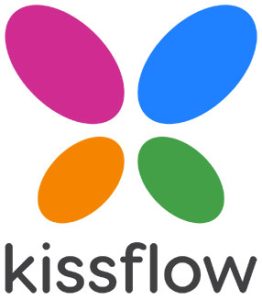
To say that digital workplaces have become the norm over the past few years would be an understatement. Much work now happens online. Project management, product development and team collaboration are all done remotely these days.
The concept and the framework were already there. The Covid-19 pandemic only sped up innovation and triggered global acceptance. Today, almost every aspect of most workplaces is digital. This change will redefine work in the future.
Modern workplaces demand openness, better access to data, transparency, flexibility, and effective communication. These factors become even more important in hybrid or remote teams.
For a digital workplace, collaboration is a primary need for success. It’s crucial for management to ensure that employees have all the necessary tools for work. Effective collaboration makes employees happy and feel valued at their jobs. This means improved performance, more productivity, and of course, better results.
How is collaboration different in a digital environment?
Digital collaboration is collaborating with your team using digital means. The basics aren’t that different except for the medium. Yet this factor alone changes many things and causes challenges that co-located teams don’t face.
The concept goes beyond simply using the newest tool or technique. It’s also about using technology to create a complete infrastructure to make things easier for your employees.
In the past, emails dominated digital collaboration. This asynchronous communication method allowed the sharing of small files and kept stakeholders updated. Email communication could help remote teams operate effectively. Chat through dedicated chat tools was also common.
Although convenient, email communication comes with its fair share of challenges. Here are a few.
- It’s difficult to keep track of long ongoing email threads and cut through the clutter.
- Email offers limited file-sharing capabilities with restrictive file-size limits and no inherent version control.
- Most importantly, a lot of time is wasted while waiting for the other side to reply to an email.
Modern digital collaboration can’t operate with email and standard chat alone. Today, a combination of synchronous and asynchronous communication is changing how teams work together. Top-tier digital collaboration tools now offer capabilities for video conferencing, contextual chats (to prevent clutter), instant messaging, @mentions, file sharing, and numerous other features that empower teams and set them up for success.
Five tried and tested ways to improve digital collaboration in any business
Digital transformation was a priority in many sectors even before the pandemic. Today, digital workplaces are a reality for a rapidly increasing list of organisations.
While there are several benefits to a remote or hybrid setup, many managers believe that there’s still a lot to do to improve collaboration. In fact, a KPMG survey indicates that 67% of managers feel they don’t collaborate effectively.
Also, around 55% reported being overwhelmed managing remote teams because of inefficient collaboration.
So, what can organisations do to change this situation? Here are five proven ways organisations can optimize digital collaboration and boost productivity:
1. Streamline communication and sharing channels
Many professionals use ‘collaboration’ and ‘communication’ interchangeably.
The concepts aren’t interchangeable.
Online collaboration goes way beyond simple online chats. If collaboration were as straightforward as that, you’d be able to run a remote team successfully using only WhatsApp. For effective digital collaboration, you must create a separate digital area. Here team members can create, share and execute ideas at scale. It should achieve this without any hurdles or red tape.
For that, effective communication channels are a primary need.
Have a clear collaboration strategy in mind. This strategy must use pre-defined processes to ensure that team members know exactly what to do in a particular situation. And, this strategy must make use of communication channels that are bidirectional and contextual within the primary user application. Only then will your processes keep running like well-oiled machines.
2. Define the meaning of successful collaboration
Another important step for digital collaboration is to define good collaboration. Doing so will give teamwork direction and help set expectations from the outset.
Focus on benchmarks like team engagement, the speed at which issues are resolved, and time spent on actual work. Doing so can help identify what exactly needs to be done to increase efficiency and minimise potential risks.
3. Select the right collaboration tool
A powerful collaboration tool that everyone else is using might not necessarily be the best choice for your team. It’s more important to ensure that the tool you select is the right fit for your team.
It should work well with your existing systems. Also, it shouldn’t have a steep learning curve or need any elaborate setup to work. These are the most common considerations.
Another important thing to consider is technology fatigue. Here’s what the research states. A team that uses different tools for collaboration, project management and file sharing is more likely to waste time (55.3%) context switching.
Here’s a concerning statistic: Employees, on average, waste around 7 hours per week toggling between applications. Add in the continuous shift in focus and the distractions, and the effect on overall productivity is massive.
In simple terms, multiple apps make things unnecessarily complicated, rather than helping out. Instead, using a single tool to handle all aspects of a digital workspace is a much better option for any business.
4. Centralise data
Sharing documents is a huge part of the digital collaboration process. Having everything centralised can help manage things efficiently. A centralised and properly updated file storage ensures that everyone on the team gets the latest and most updated version of a certain file.
A single file store can reduce misunderstandings and get everyone on the same page.
5. Cater to time-zone differences while planning
Handling digital workspaces involves dealing with wildly varying time zones and geo-locations.
This is one of the biggest challenges to handle, especially if an organization offers flexible working hours.
Here’s what you must do. Ensure that there are times when everyone on the team is available for a meeting. Make a note of the time differences and ensure that the working hours of everyone on the team overlap. This way, everyone can be on the same page when it comes to the direction of work
Final word
An undeniable fact is that digital work and collaboration are here for good. Still, many challenges must be overcome for continued work success within remote and hybrid teams. Being deliberate about how your team approaches remote work can make all the difference to the outcomes you experience.

























